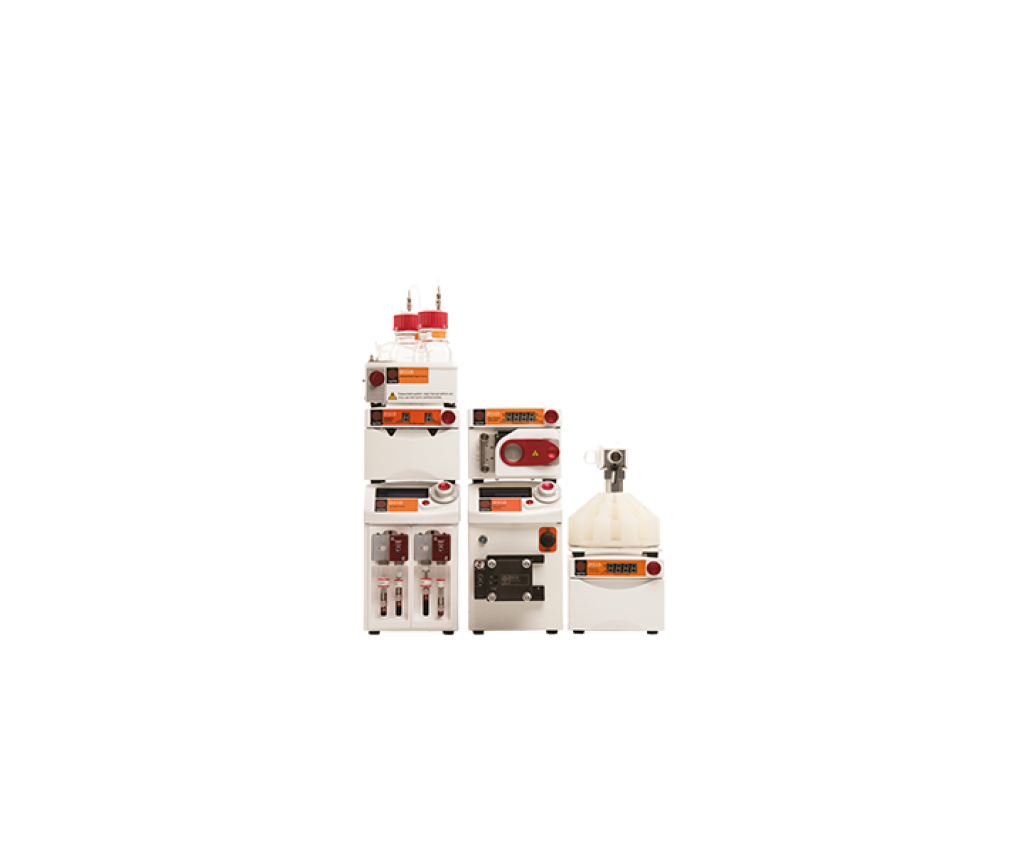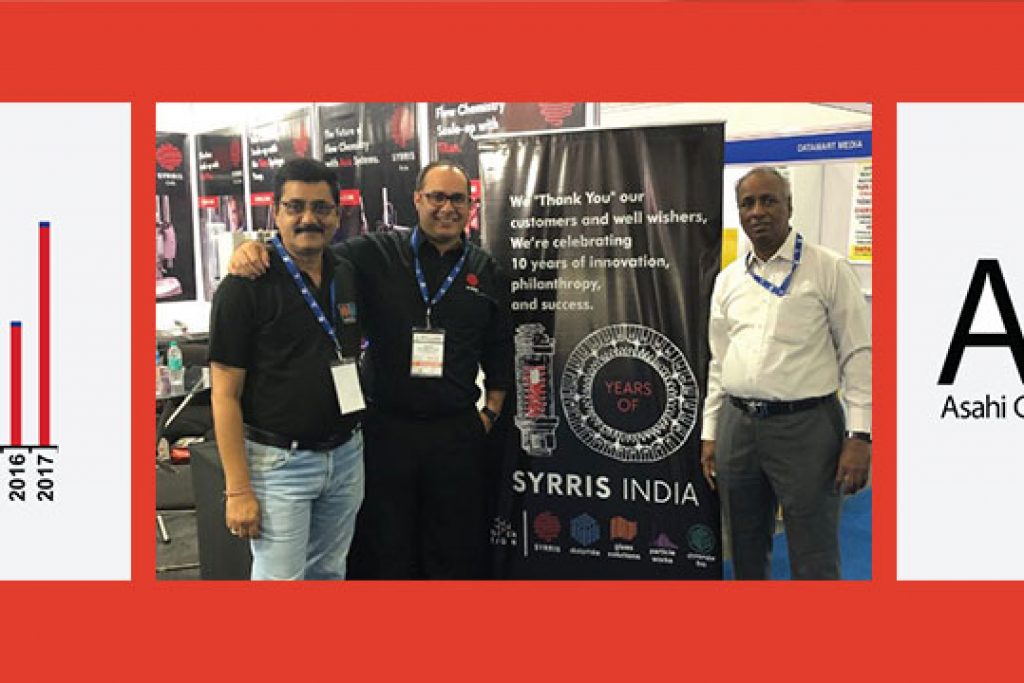 We’re excited to announce that Syrris will be exhibiting at the much-anticipated ACHEMA chemistry show in Frankfurt, Germany (11th – 15th June 2018)! Alongside other leading companies in the flow industry, we’ll be showcasing our batch and flow chemistry systems for lab and pilot production scale chemistry in the new-for-2018 Flow Chemistry Pavilion.
We’re excited to announce that Syrris will be exhibiting at the much-anticipated ACHEMA chemistry show in Frankfurt, Germany (11th – 15th June 2018)! Alongside other leading companies in the flow industry, we’ll be showcasing our batch and flow chemistry systems for lab and pilot production scale chemistry in the new-for-2018 Flow Chemistry Pavilion.
Flow chemistry lightning talks
Syrris’ resident flow chemistry expert, Andrew Mansfield, will be presenting a range of free-to-attend 10-minute lightning talks on various flow chemistry topics. Presented on the Syrris stand in the Flow Chemistry Pavilion, the talks are aimed at helping chemists to better understand the benefits of flow chemistry and the scope of what can be achieved using flow chemistry systems. Read on for a full breakdown of the talks.
The talks will be repeated throughout the week; timings will be released nearer the time. Spaces will be limited so register your interest in the talks using the form at the bottom of the page to be kept up-to-date.
Can’t make the show but don’t want to miss out on the lightning talks? Click here to submit your details and we’ll email you the presentations after the show! Also, discover our applications pages for a detailed breakdown of various chemistries.
The lightning talk agenda
-
1. First principles of flow chemistry
Flow chemistry is an excellent addition to the chemist’s toolbox that adds many benefits in the control of chemical synthesis but is still a relatively new technique for some. While we use the same transformations to build our compounds, the technique requires a small change in the way we carry out our chemistry. This short presentation will help to describe the subtle difference between flow and traditional batch techniques by explaining the first principles of residence time, temperature, mixing, and pressure control. We also outline the key benefits that using this technique can add such as increased reaction rates, reduced hazards, and ease of scaling up. Read our flow chemistry basics application page here.
-
2. Benefits of flow chemistry
We’ll outline the key benefits of using flow chemistry techniques such as increased reaction rates, reduced hazards, and ease of scaling up. Read our flow chemistry basics application page here.
-
3. Converting batch to flow methodology
Flow chemistry is a powerful synthetic addition to add to the chemist’s toolbox and should be considered as complementary to batch techniques to enable the greatest range of synthetic applications. However, flow chemistry techniques will be new to most chemists – and a little scary – especially when considering how to convert a batch reaction to a continuous flow one. In this session, we will run through the thought process of identifying the right method for your application and consider how we begin to convert our chemistry, and we’ll include some examples. Read our batch vs. flow chemistry application page for more information.
-
4. Efficient library synthesis under flow conditions
The generation of targeted library arrays to create diverse sets of compounds for research purposes has been an important tool for many years. The use of flow chemistry techniques now allows chemists to harness its many benefits and design compounds with increased chemical space and complexity under fully automated conditions. 10s-100s of compounds can be synthesized and purified a day with tailored reaction conditions for each synthesis. Read the library synthesis in flow application page here.
-
5. Creating reactive intermediates and hazardous reagents in-situ
Many chemical reactions use hazardous reagents or create highly reactive intermediate products. This can prove restrictive when we come to scale these reactions. Applying flow chemistry techniques can open these restrictive chemistries that simply may not be possible using traditional techniques. The capacity for greater heat transfer, control of reaction conditions, and a reduced inventory of reactants contributes to reducing potential hazards. This session provides some examples of how flow chemistry can create hazardous reagents and energetic reactive intermediates in-situ to eliminate the need for large feedstocks and isolation of these reactants.
-
6. Continuous metabolite synthesis in flow
In vivo, a drug molecule undergoes its first chemical transformation within the liver via CYP450-catalyzed oxidation. The chemical outcome of this drug oxidation to its metabolite is key information to any drug development process. Electrochemistry can be used to simulate CYP450 oxidation, yet it is often confined to the analytical scale, hampering product isolation and full characterization. We can combine flow techniques and electrochemistry to replicate these oxidations at the preparative scale. This session introduces continuous flow electrochemistry techniques and demonstrates that such metabolites can be synthesized by flow electrolysis at the 10 to 100 mg scale. Discover the electrochemistry in flow application page and the Asia FLUX electrochemistry system.
Register your interest for the talks
The talks will be repeated throughout the show but spaces will be limited so please register your interest so we can make sure we repeat them enough; just use the form below and we’ll email you closer to the time with a timetable for the talks. We’ll also email copies of the talks to you after the show.
 About Andrew Mansfield
About Andrew Mansfield
Andrew is Syrris' Head of Flow Chemistry and is responsible for the continuous development of Syrris' lab- and pilot-scale flow chemistry products and applications.
With a passion for flow chemistry developed from a comprehensive career that includes research at Pfizer Pharmaceuticals and the University of Cambridge, Andrew is on hand to help chemists looking to transfer from traditional batch techniques to flow, and those looking to expand upon their existing flow applications.

